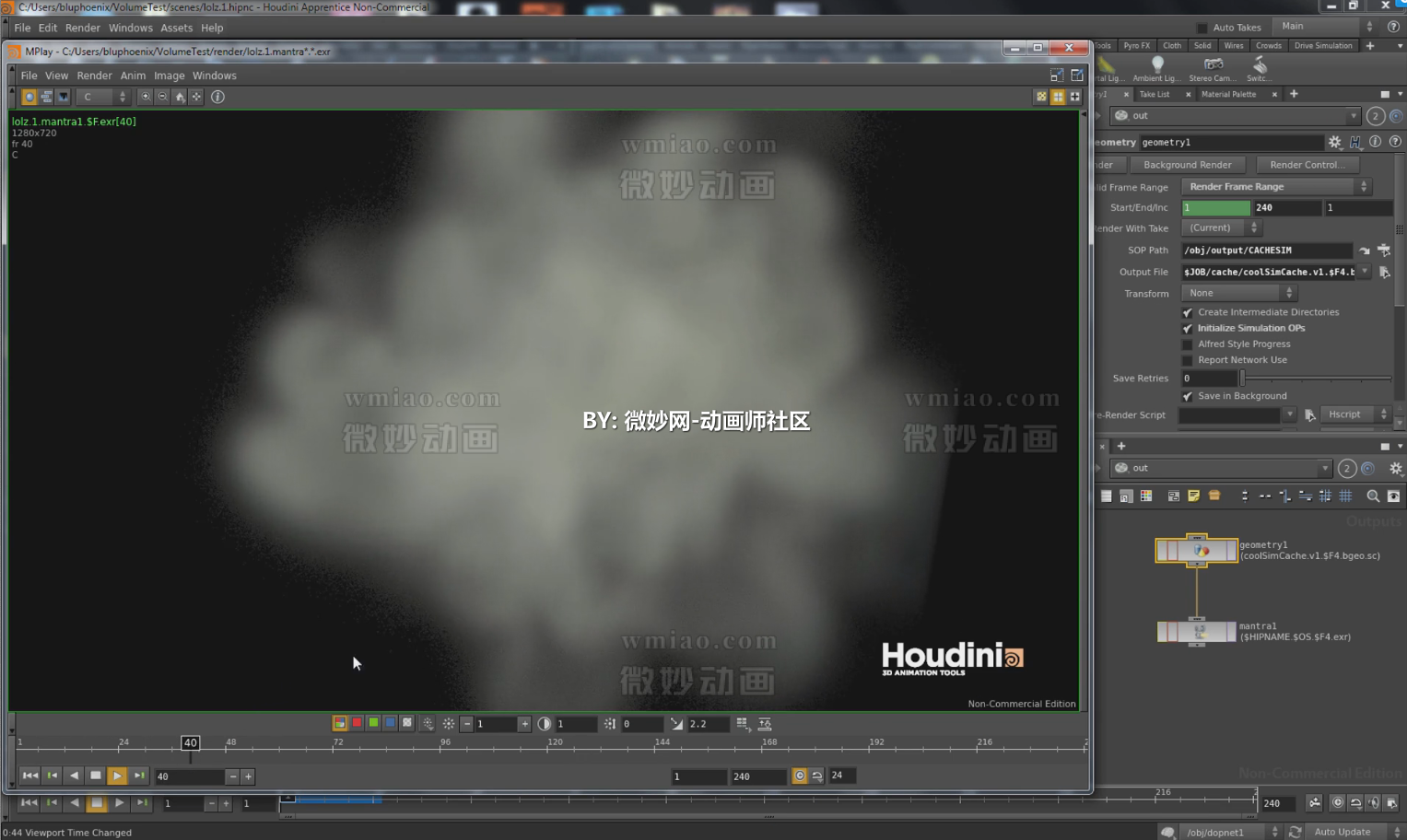- 教程语言:
- 英文(English)
- 下载方式:
- 网盘下载
|
CGCircuit - 动力学技术训练视频教程Applied Houdini Dynamics Volumes 1 - 5 
CGCircuit - 动力学技术训练视频教程Applied Houdini Dynamics Volumes 1 - 5 
CGCircuit - 动力学技术训练视频教程Applied Houdini Dynamics Volumes 1 - 5 
CGCircuit - 动力学技术训练视频教程Applied Houdini Dynamics Volumes 1 - 5 
CGCircuit - 动力学技术训练视频教程Applied Houdini Dynamics Volumes 1 - 5 
CGCircuit - 动力学技术训练视频教程Applied Houdini Dynamics Volumes 1 - 5 
时间6h 34m MP4 标题:cgcircuit–应用胡迪尼力学卷1-5 信息: 应用胡迪尼生产素质系列由Steven Knipping创建,目前高级刚体破坏/外汇技术总监在卢卡斯的工业光魔(星球大战:原力觉醒,复仇者:ULTRON时代,Tomorrowland)。受益于生产验证的工作流程,同时也得到了深入的解释为什么事情的工作方式,他们做。最好的是–每个视频里塞满了真实的信息,而不是无偿的脚注和死腔说话。 77m 动力学中的我,我们会马上处理模拟汽化猪头。我们从模拟的基本原理如生成初始量以及什么领域,载体,和体素。从那里我们建立了一个基本的模拟与一些力量,缓存它,并渲染它。提示和技巧,包括最佳的UI组织和裸骨工作流设置也将被讨论。 98m 在动力学II,我们将立即超越基本。而不是从静态卷开始,我们将动态源湍流密度和速度到我们的模拟。从那里,我们将与各种microsolvers包括湍流扰动,扩散模拟控制,甚至结合倍数的这些共同为更先进的影响。最后,我们将讨论力、散度和涡度对事物形状的影响.。一如既往,以生产为导向的技术将优先考虑,我甚至会分享一些我最喜欢的技巧和技巧,以更快,更有效地实现质量结果! 117m 在动态III中,我们将针对哪些咒语,灯光和着色器设置,你需要知道,以生产快速,高品质的渲染。能够牺牲最小的质量而获得大量节约时间将迭代快镜头通过发展的关键,然后切换到一个伟大的形象时,你没有跑的时间。我们还将讨论其他纹理噪声和一般的材质,没有它我们就不能产生photoreal纹理效果。最后,我们将学习有关的散射和不同的图像查看个人灯光效果,用于调试,更重要的是以后,合成。 102m 在动态IV,我们涵盖的场景灰尘/烟雾/蒸汽/魔术最经常发现在生产工作-破坏。我们从基本压裂和刚体模拟,以及二次粒子模拟。从这些我们可以动态源卷到我们的烟雾模拟压裂网本身的特点。先进的工作流程快速碰撞,准确的采购,并使语言属性操作的详细报道。 Duration 6h 34m MP4 Title: CGCircuit – Applied Houdini Dynamics Volumes 1-5 Info: Applied Houdini is a production quality oriented series created by Steven Knipping, currently a Senior Rigid Body Destruction / FX Technical Director at Lucasfilm’s Industrial Light & Magic (Star Wars: The Force Awakens, Avengers: Age of Ultron, Tomorrowland). Benefit from production proven workflows while also getting an in depth explanation of why things works they way they do. Best of all – each video is crammed with actual information and footnotes instead of gratuitous talking and dead space. 77m In Dynamics I, we will jump right in and tackle a simulation of a vaporizing pig’s head. We start with simulation fundamentals such as generating initial volumes as well as what exactly domains, vectors, and voxels are. From there we set up a basic simulation with a few forces, cache it, and render it. Tips and tricks including optimal UI organization and a bare bones workflow setup will also be discussed. 98m In Dynamics II, we will immediately move beyond the basics. Rather than start from a static volume, we will dynamically source turbulent density and velocity into our simulation. From there we will control our simulation with a variety of microsolvers including turbulence, disturbance, and diffusion, and even combine multiples of these together for even more advanced effects. Finally, we will talk about the effects that forces, divergence, and vorticity will have on the shape of things. As always, production oriented techniques will take priority and I’ll even share a few of my favorite tips and tricks to achieve quality results faster and more efficiently! 117m In Dynamics III, we will target exactly which Mantra, light, and shader settings you will need to know about in order to produce quick, hi quality renders. Being able to sacrifice minimal quality while gaining massive time savings will be critical to iterating quickly on shots through development, and then switching over to making a great image when you’re done without running out of time. We will also talk about rest texture noise and the shader in general, without which we will not be able to produce photoreal results. Finally, we will learn about scattering and viewing the effects of individual lights in different images, for use with debugging and more importantly later, compositing. 102m In Dynamics IV, we cover the scenarios for dust/smoke/steam/magic most often found in production work – destruction. We begin with basic fracturing and rigid body simulation, as well as secondary particle simulation. From these we can dynamically source volumes into our smoke sim with characteristics of the fracturing mesh itself. Advanced workflows for speedy collisions, accurate sourcing, and VEX language attribute manipulation are covered in detail. |
楼主热帖
更多帖子
-
Aaron Blaise - 动画课程Animation Course Complete
浏览:21374 | 评论:113 -
最佳打斗作画mad
浏览:13574 | 评论:66 -
Maya四足动画骨骼动画视频教程全集 3DMOTIVE QUADRUPED RIGGING IN MAYA VOLUME 1-4
浏览:12236 | 评论:51 -
Cartoon Character Animation with Maya 2015角色动画教程电子书英文版
浏览:11118 | 评论:48 -
Vray环境光线照明大师级视频教程 MASTERING LIGHTING BY GRANT WARWICK LESSONS 1-4
浏览:10762 | 评论:37 -
3DMotive - Quadruped Run Cycle in Maya 游戏动作四足跑循环
浏览:8301 | 评论:33 -
Grasshopper建筑曲面参数化教程初中级进阶犀牛建筑建模中文教程
浏览:7113 | 评论:25 -
UE4虚幻游戏场景环境视频教程第一季 3DMOTIVE EXTERIOR ENVIRONMENT IN UE4 VOLUME 1
浏览:6473 | 评论:28 -
MAX教学:女性角色建模)
浏览:6399 | 评论:26 -
抽空做了个作品,希望大家给点意见
浏览:6294 | 评论:49
 大数据正在努力搜索中,请稍等...
大数据正在努力搜索中,请稍等...






全部评论45